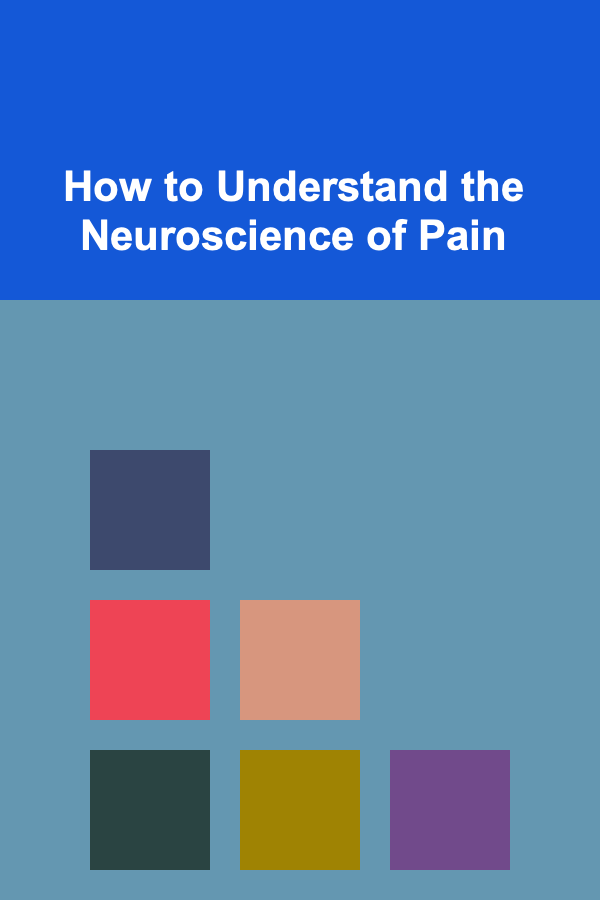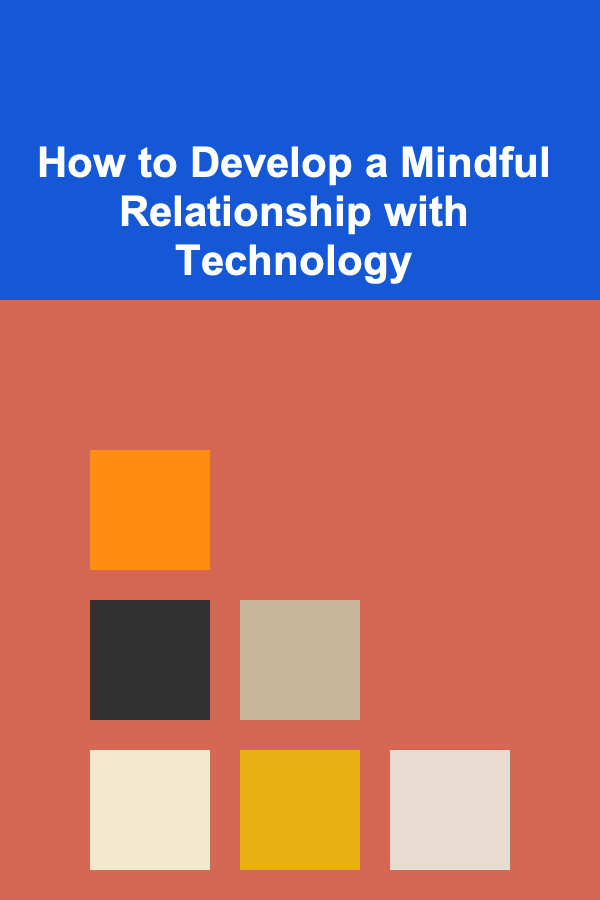
10 Tips for Digital Wellbeing: A Yearly Tech Detox Checklist
ebook include PDF & Audio bundle (Micro Guide)
$12.99$11.99
Limited Time Offer! Order within the next:
Not available at this time

In the modern world, technology is an indispensable part of our daily lives. It helps us stay connected, be productive, and entertain ourselves. However, as much as digital tools offer convenience, they can also lead to stress, distractions, and even a sense of overwhelm. For many, the constant barrage of notifications, emails, and social media posts can lead to digital burnout.
A digital detox is more important than ever in this hyper-connected era. It's an opportunity to reset and reconnect with ourselves, focusing on our well-being and productivity in a more balanced way. Whether it's taking a break from screens or adopting healthier tech habits, here are ten essential tips to guide your yearly tech detox. These simple strategies will help you reclaim control over your digital habits and improve your overall mental health.
Set Screen Time Limits
One of the first steps in achieving digital wellbeing is to monitor and limit your screen time. With smartphones, tablets, and laptops constantly in our hands, it's easy to lose track of time spent on devices. Setting screen time limits can help you regulate your usage and encourage you to engage with other activities.
How to Implement Screen Time Limits:
- Use built-in features: Most devices come with screen time tracking features that let you set limits for specific apps or overall screen time. For example, iPhones and Android phones both offer ways to track and limit app usage.
- Set boundaries: Decide on limits that are realistic for your lifestyle. For instance, limit your social media time to 30 minutes a day, or avoid screen time for the first hour after waking up.
- Be consistent: Make a habit of following your screen time boundaries, and use your extra time for offline activities such as reading, exercising, or spending time with loved ones.
Take Regular Breaks
It's easy to get caught up in work or entertainment when using technology, but extended periods of screen time can lead to eye strain, mental fatigue, and decreased focus. Taking regular breaks is essential to refresh your mind and body.
Tips for Taking Breaks:
- The 20-20-20 rule: For every 20 minutes of screen time, take a 20-second break and look at something 20 feet away. This helps reduce eye strain.
- Set a timer: Use a timer to remind yourself to take breaks every 30 to 60 minutes. Even a short 5-minute walk or stretching session can do wonders for your mental clarity and energy.
- Practice mindfulness: During your breaks, take a moment to practice mindfulness. Close your eyes and focus on your breathing, allowing yourself to disconnect from the digital world for a few minutes.
Designate Tech-Free Zones
Having tech-free zones in your home or workspace can significantly reduce your dependence on devices. These areas serve as a refuge where you can disconnect from the digital world and focus on other aspects of your life.
Where to Create Tech-Free Zones:
- Bedroom: Keep your bedroom a tech-free zone to promote better sleep. Avoid using devices before bed to help your mind relax and improve your sleep quality.
- Dining Area: Designate the dining table as a space for meals and conversation. This encourages mindful eating and fosters stronger connections with family or friends.
- Living Room: Set up a cozy, tech-free area in your living room where you can engage in hobbies like reading, puzzles, or board games.
Declutter Your Digital Space
Just like physical clutter can create stress, digital clutter can also overwhelm you. Unorganized files, overflowing email inboxes, and a chaotic desktop can make it harder to stay focused and productive. A digital detox includes tidying up your digital space to create a cleaner, more organized environment.
Steps to Declutter:
- Email Inbox: Take the time to unsubscribe from newsletters or marketing emails you no longer need. Organize your inbox into folders to help prioritize important messages.
- Files and Photos: Delete old files, pictures, and apps that no longer serve a purpose. Back up important documents and photos to cloud storage or an external hard drive.
- Social Media: Clean up your social media profiles by unfollowing accounts that don't add value to your life or align with your interests.
Practice Digital Minimalism
Digital minimalism is a philosophy that advocates for using technology only in ways that support your values and goals. This approach encourages intentional use of devices and software to enhance your life rather than detract from it.
How to Implement Digital Minimalism:
- Prioritize essentials: Identify the apps and tools that are most beneficial for your work, personal development, and social connections. Cut back on unnecessary apps, games, or subscriptions.
- Unsubscribe from distractions: Unsubscribe from email lists and social media notifications that do not align with your goals or add value to your day.
- Use technology purposefully: When you use your phone or computer, be intentional. Avoid mindlessly scrolling through social media or checking your emails frequently. Instead, set aside specific times to check notifications.
Engage in Offline Activities
One of the most rewarding aspects of a digital detox is rediscovering activities that don't involve screens. Offline activities can help you reconnect with yourself, recharge, and experience the world in a more meaningful way.
Ideas for Offline Activities:
- Reading: Dive into a good book, whether it's fiction, non-fiction, or self-improvement. Reading not only offers relaxation but also helps improve focus and mental clarity.
- Exercise: Go for a walk, hike, or take up yoga. Physical activity helps boost mood, reduce stress, and improve overall wellbeing.
- Creative Hobbies: Start a new hobby, such as painting, knitting, cooking, or gardening. These activities are perfect for reducing stress and enhancing creativity.
Reconnect with Nature
Spending time outdoors is one of the most effective ways to unplug and reset. Nature provides a peaceful environment that encourages relaxation, reflection, and mindfulness. Whether it's a walk in the park, a weekend hike, or simply sitting under a tree, reconnecting with nature can improve mental health and well-being.
Tips for Connecting with Nature:
- Take a walk: Spend time in natural surroundings, whether it's a walk through a nearby park or exploring a nature trail.
- Outdoor activities: Engage in outdoor activities like cycling, camping, or gardening. These activities encourage mindfulness and help you disconnect from digital distractions.
- Mindful observation: When outdoors, take time to observe the world around you. Notice the colors, sounds, and smells of nature to engage your senses fully.
Establish Tech-Free Hours
Designating tech-free hours during the day is an effective way to prevent technology from dominating your time. These periods give you the chance to focus on personal growth, family, or other activities without the constant interruptions of emails, notifications, or social media.
How to Create Tech-Free Hours:
- Before bed: Set a rule to avoid screens at least 30 minutes before bedtime. This helps your mind relax and prepare for a better night's sleep.
- During meals: Make mealtime a tech-free zone to encourage conversation and mindfulness around food.
- Family time: Dedicate an hour or two each day to spend with family or friends without the distraction of screens.
Turn Off Notifications
Constant notifications from apps, emails, and social media can create a sense of urgency and disrupt your focus. Turning off non-essential notifications allows you to regain control of your time and attention.
How to Turn Off Notifications:
- On apps: Go to your phone's settings and turn off notifications for apps that aren't critical. Limit notifications to urgent emails or messages from close contacts.
- Social media: Disable notifications for social media apps to reduce distractions. Instead, schedule specific times during the day to check updates.
- Email alerts: Turn off email notifications for non-essential accounts. Instead, check your inbox during designated times.
Practice Digital Mindfulness
Digital mindfulness involves being present and intentional with your use of technology. By practicing mindfulness while engaging with screens, you can reduce stress and make more thoughtful choices about how you use your devices.
How to Practice Digital Mindfulness:
- Pause before responding: Before reacting to a message or social media post, take a moment to pause and reflect on your response. This prevents impulsive or emotional reactions.
- Limit multitasking: Try focusing on one task at a time rather than bouncing between different apps or activities. This increases productivity and reduces feelings of overwhelm.
- Mindful tech use: Be aware of your emotions and physical state while using technology. If you feel stressed or overwhelmed, take a break to reset.
Conclusion
Taking the time to incorporate these digital wellbeing tips into your life can have a profound impact on your mental health, productivity, and overall quality of life. By setting screen time limits, engaging in offline activities, and practicing digital mindfulness, you can regain control over your tech habits and live a more balanced, focused, and fulfilling life. Make this yearly tech detox a habit, and watch as it enhances your personal well-being and helps you maintain a healthier relationship with technology.

How to Create a Checklist for Evaluating Team Performance During Group Reviews
Read More
How to Create a Simple but Effective Filing System for Your Home
Read More
How to Understand the Neuroscience of Pain
Read More
How to Develop a Sense of Purpose
Read More
How to Develop a Mindful Relationship with Technology
Read More
How to Choose the Right Golf Club for Your Handicap
Read MoreOther Products

How to Create a Checklist for Evaluating Team Performance During Group Reviews
Read More
How to Create a Simple but Effective Filing System for Your Home
Read More
How to Understand the Neuroscience of Pain
Read More
How to Develop a Sense of Purpose
Read More
How to Develop a Mindful Relationship with Technology
Read More